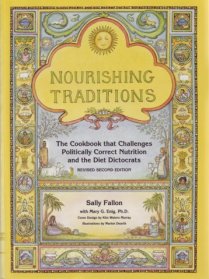September 26th was National Pancake Day – who knew? 
……except for pancake lovers maybe
…..except that there is less of them now that gluten and grain and flour is taboo..
This is about a better way to make pancakes… it is NOT about alternative flours – the alternative flours and ancient grains can be awesome but if you or someone in your family is partial to “white flour” pancakes – read on.
Do pancakes HAVE to be on your no eat list? Well, that is up to you, as long as you know all the info – for most of you, if you want your grain you can eat it too. Yes there are all sorts of recipes for pancakes now, all free of something. I am talking about good ole flapjacks and why the traditional way of making them is still one of the best in my book.
Answer this – how many years has there been a form of bread in the world? Then how come – like all of a sudden – bread is “not healthy”. There are a few reasons, most of them wrapped up into us humans fooling with foods and processes that nature gave us.
As early as 8000 B.C. bread was a staple with the Egyptians honing the practice of rising bread before baking. Bread was used as a form of money in times past – I am sure I do not have to say again – bread has been around a long time.
Let’s cut to the chase – you need to know about sourdough – REAL sourdough
REAL sourdough Fundamentals:
1) First of all – sourdough does not mean that it is sour. Don’t let the word sour turn you away, think of sourdough as a PROCESS not a flavor. It is a culturing and enlivening of ground grain. And – sourdough is not just for bread! Anything you make with flour, you can make “sourdoughed”..
2) Sourdough is a live culture that does amazing things to flour and it can help you make bread and bread products that are lower in gluten (our ancestors did not make a gluten problem so they did not have a gluten problem) I have some friends that order my sourdough bread, when other bread products make them feel like they should not be eating it.
3) It rises the bread without any other commercial yeast you buy from the store
4) You can make your starter from thin air -literally! So really it is an awesome, self – perpetuating, “sustainable” food source that can always be around to make any kind of bread products you want – I made sourdough brownies the other day that were amazing.
Why did I make brownies with sourdough? Mostly – because this process works within the batter and makes your baking goods more digestible. Once you start seeing the wonders of sourdough you won’t want to make anything without it.
Think of your bowl of sourdough as a little fish tank with invisible little friendly fish – you have to feed them, most everyday. But if you are using it most everyday you want your little critters to be healthy and happy. You say hello, you feed your little batch of starter and – poof – a couple hours later it is bubbly and growing. When it gets to this jiggly stage is when it gets fun. When you don’t want to bake for a while – you just place it in a fridge – and will wait til you feel like wanting to deal with it again – it is very patient with you.
Now back to jiggly! You add this sourdough to a recipe and it transforms it to – well – a more cohesive batter that has a life of its own. Except for really cool pancakes – it you like a really spongy pancake – pure sourdough pancakes may be for you, and they are not like a rock in your tummy.
Sourdough baking is an artisianal process – meaning that does not follow strict rules on time, temperature and amount of ingredients. If you are a real “measurer” in the kitchen I may lose you right here – but on the other side it is a very forgiving, it is an “anyone can do it kind of thing”. It is just one of those processes that your mom or grand mom would have shown you – that you could have worked on together in the kitchen, like learning an art that you finally master and can teach to your kid! Bakers were once revered in the communities – and specialized in this craft alone.
So lets make pancakes! Here is my favorite! It is especially good to do on days that you have been feeding your sourdough but just have not gotten to making anything with it.
Here is how easy it is once you have the sourdough: While you are heating a griddle place a couple cups of sourdough into another bowl, add a bit of sugar if you want plus an egg, a dash of salt and a dash of baking soda (you can add more flour too, but why do that is you have lots of starter?) Place coconut oil (or other good oil) on your griddle – make pancakes with that starter. done. The jigglier the starter – the spongier the pancake!
Want to know more?? Come to one of my sourdough classes at www.LodgeOnLakeClear.com – my resort in the Adirondack Mts where I am Executive Chef – and passionate about sharing Old World healthy methods of cooking.
Bring a group and learn how to incorporate Old World preparations into a New Age!
This article from a Baker’s Forum does a nice job at explaining the history and science of sourdough. Go here for more.






